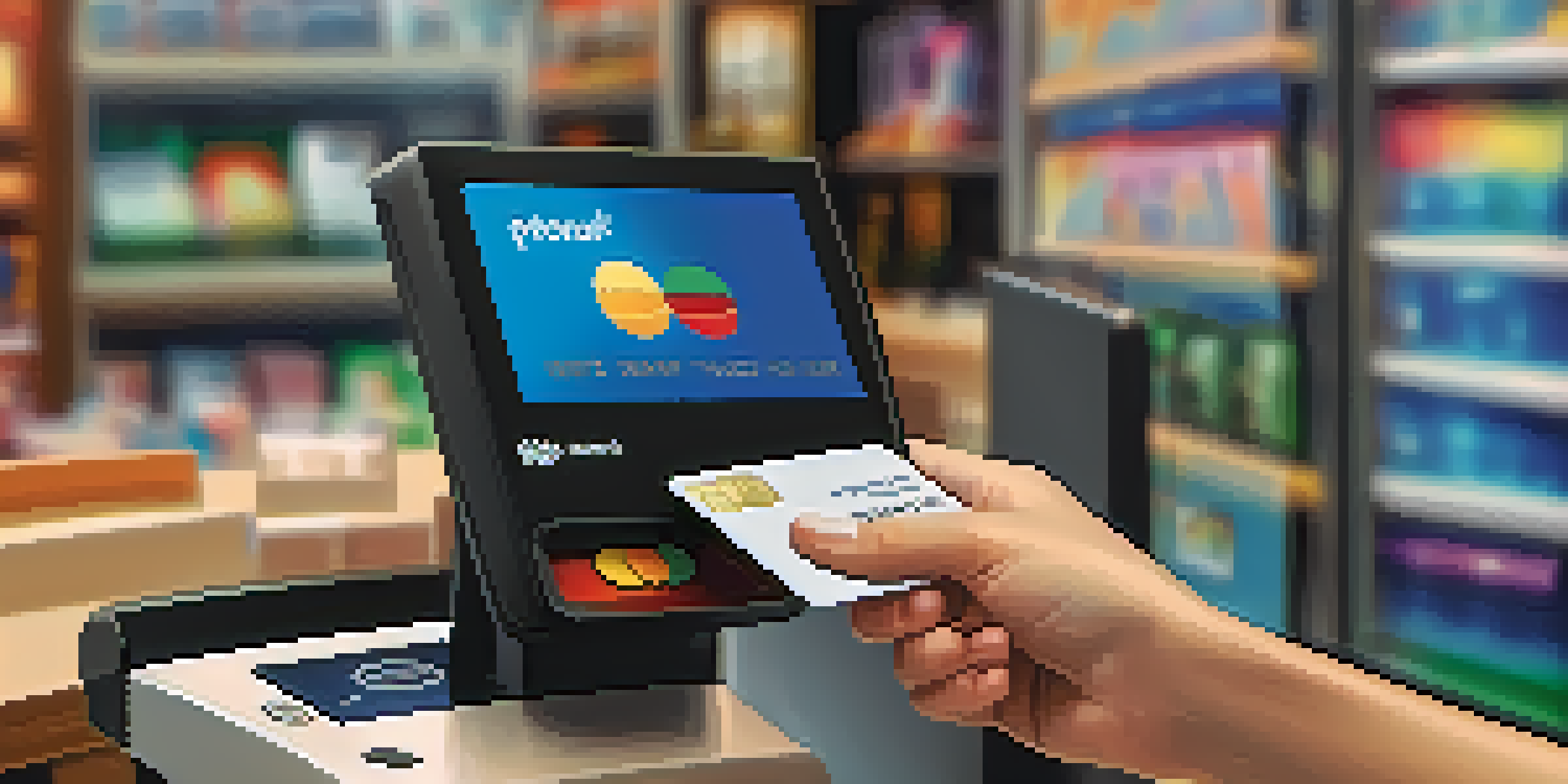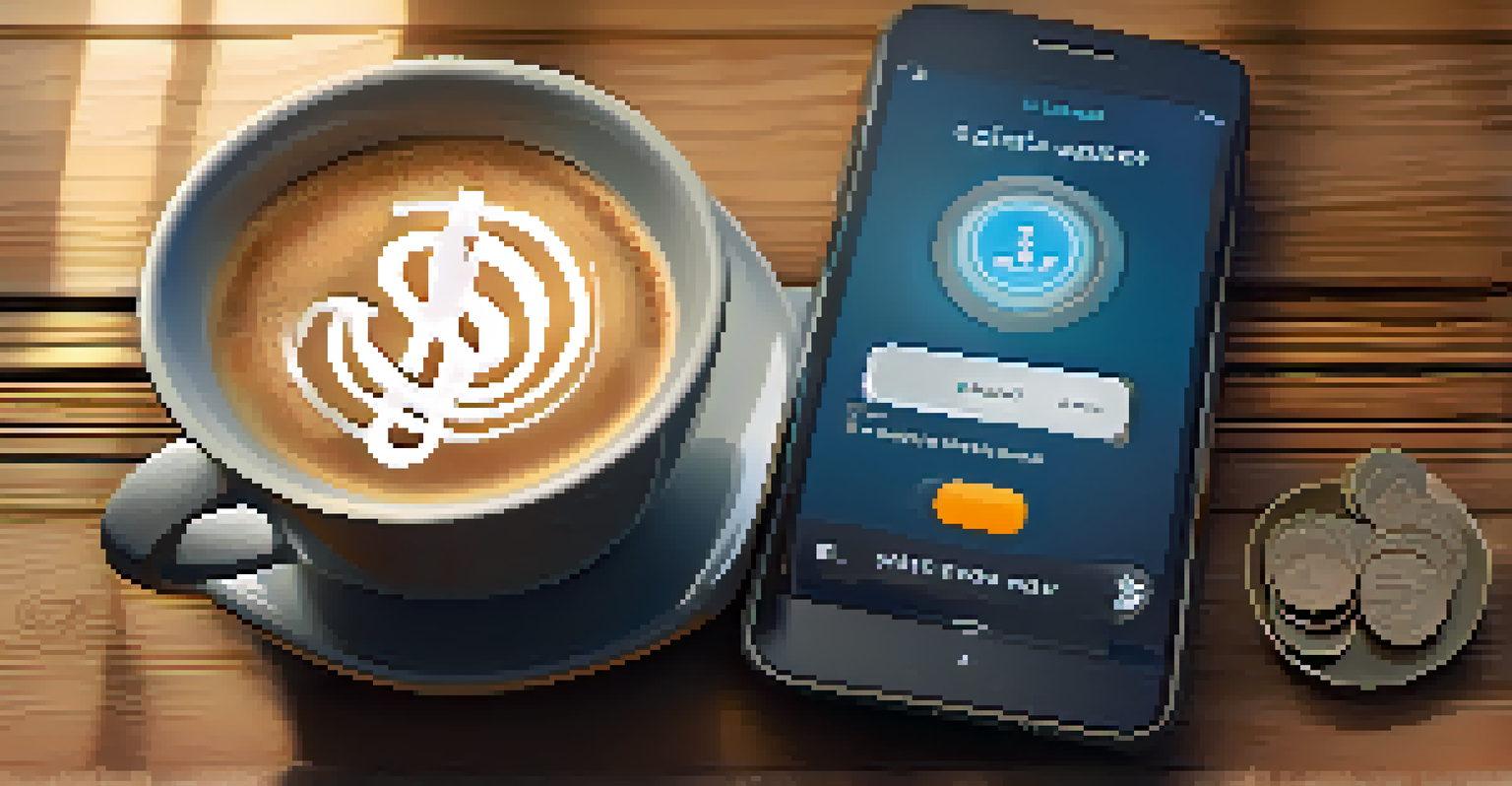Contactless Payments: How They Work and Their Benefits

What Are Contactless Payments and How Do They Work?
Contactless payments are a modern way to make transactions without the need for physical contact. Using technologies like NFC (Near Field Communication) or RFID (Radio Frequency Identification), you can simply tap or wave your card, smartphone, or smartwatch near a payment terminal. This process allows for quick and efficient payments, reducing the time spent at checkout lines.
The future of money is digital currency.
When you make a contactless payment, your device communicates with the terminal by sending encrypted data. This data includes your payment information, which is securely transmitted to complete the transaction. Since there's no need to swipe a card or enter a PIN for small purchases, it streamlines the entire payment process.
The appeal of contactless payments lies in their convenience and speed. Instead of fumbling for cash or cards, you just need to hold your device near the terminal, making it perfect for busy lifestyles. This ease of use has led to a growing adoption of contactless payment methods worldwide.
The Technology Behind Contactless Payments
At the heart of contactless payments lies NFC technology, which enables devices to communicate over short distances. When you bring your device close to a terminal, the NFC chip activates, allowing it to send and receive information. This seamless interaction is what makes contactless payments so effortless.

RFID is another technology used in contactless payments, often found in access cards and tags. While both NFC and RFID share similarities, NFC is specifically designed for secure transactions and supports two-way communication. This ensures that the payment process is not only fast but also secure.
Contactless Payments: Fast & Easy
Contactless payments allow you to make quick transactions by simply tapping your card or smartphone at a terminal.
Both technologies rely on secure encryption methods to protect your financial information. This means that even if someone were to intercept the signal, they would not be able to access your payment details. This built-in security feature adds an extra layer of confidence for users embracing contactless payments.
Benefits of Using Contactless Payments
One of the primary benefits of contactless payments is their speed. Transactions can be completed in seconds, which is a game-changer for both consumers and businesses. Imagine breezing through the checkout line without having to dig for your wallet or count change—what a relief!
Innovation distinguishes between a leader and a follower.
Convenience is another significant advantage. With the ability to store multiple payment methods on your smartphone or smartwatch, you can leave your physical cards at home. This not only lightens your load but also means you have your payment options readily available at your fingertips.
Additionally, contactless payments can enhance hygiene, especially in a post-pandemic world. With fewer surfaces to touch, users can minimize their exposure to germs, making it a safer option in public spaces. This focus on health and safety has contributed to the rise of contactless transactions.
Security Features of Contactless Payments
Security is a top concern when it comes to digital transactions, and contactless payments address this with several robust features. Each transaction generates a unique code that is specific to that interaction, meaning your actual payment information is never transmitted. This makes it incredibly difficult for fraudsters to misuse your data.
Moreover, most contactless payment systems require user authentication for larger purchases. This might include a fingerprint scan or a PIN entry, providing an extra layer of protection. As a result, even if your device gets lost or stolen, your financial information remains safeguarded.
Robust Security Features Explained
Each contactless transaction generates a unique code, ensuring your payment information remains secure and protected.
The encryption used in contactless payments further enhances security. By scrambling your payment details, it prevents unauthorized access, ensuring that your sensitive information stays secure. This combination of unique transaction codes, user authentication, and encryption makes contactless payments a reliable choice.
Common Misconceptions About Contactless Payments
Despite their growing popularity, there are still several misconceptions surrounding contactless payments. One common myth is that they are less secure than traditional payment methods. In reality, the encryption and unique transaction codes used in contactless payments often make them more secure than swiping a card.
Another misconception is that contactless payments can be accidentally activated. While it's true that devices can be triggered when they are close to a terminal, they won't process a transaction without the necessary authentication. This means you can rest easy knowing that your payment won't be processed without your consent.
Lastly, some people believe that contactless payments are only for small purchases. However, many merchants have raised their transaction limits, allowing for larger purchases to be made contactlessly. This flexibility makes contactless payments a viable option for a wide range of transactions.
The Future of Contactless Payments
As technology continues to advance, the future of contactless payments looks bright. With the rise of digital wallets and mobile payment apps, consumers have more options than ever for making contactless transactions. This trend is expected to grow, leading to increased adoption across various sectors.
Moreover, innovations like biometric authentication—such as facial recognition and fingerprint scanning—are being integrated into contactless payment systems. These advancements not only enhance security but also improve user experience, making payments even more seamless.
Growing Adoption of Contactless Tech
The rise of digital wallets and advancements in payment technology are leading to increased use of contactless payments across various sectors.
With more businesses adopting contactless payment options, it's clear that this payment method is here to stay. As we move towards a cashless society, contactless payments will play a significant role in shaping the way we handle transactions in our daily lives.
How to Get Started with Contactless Payments
Getting started with contactless payments is easier than you might think. First, check if your bank or credit card issuer offers a contactless card. Many major banks have already rolled out this feature, allowing you to tap and pay at compatible terminals.
If you prefer using your smartphone, consider downloading a mobile wallet app like Apple Pay, Google Pay, or Samsung Pay. These apps securely store your payment information and allow you to make contactless payments with just a tap of your device. Plus, they often come with additional rewards and discounts.

Finally, familiarize yourself with the places that accept contactless payments. Many retailers, restaurants, and public transportation systems have adopted this technology, making it a convenient choice for everyday transactions. With just a little preparation, you'll be ready to enjoy the benefits of contactless payments in no time.